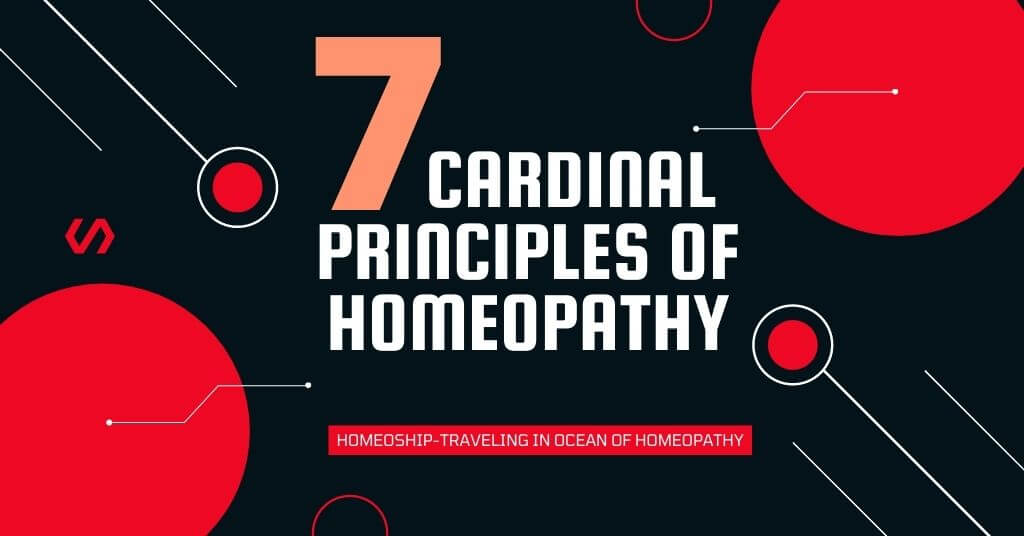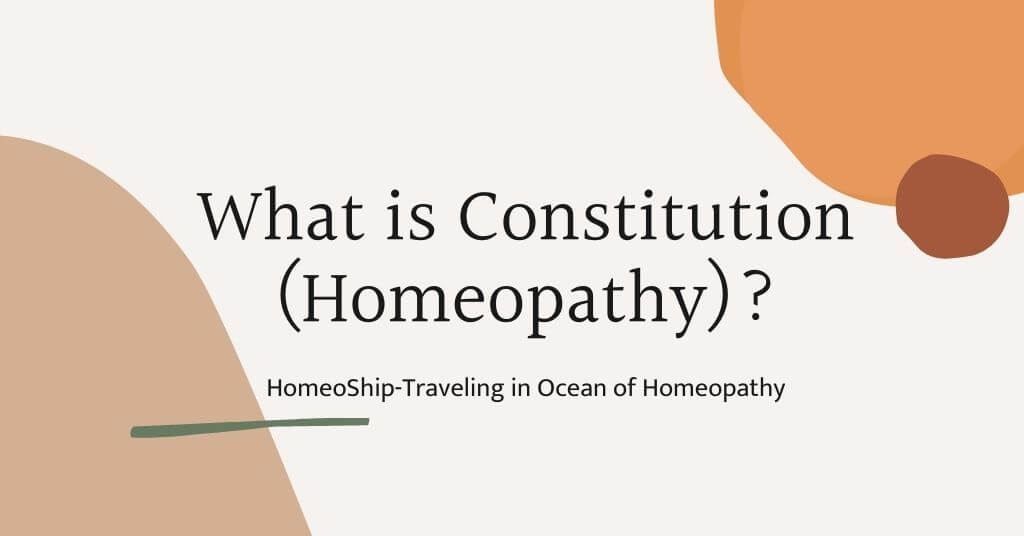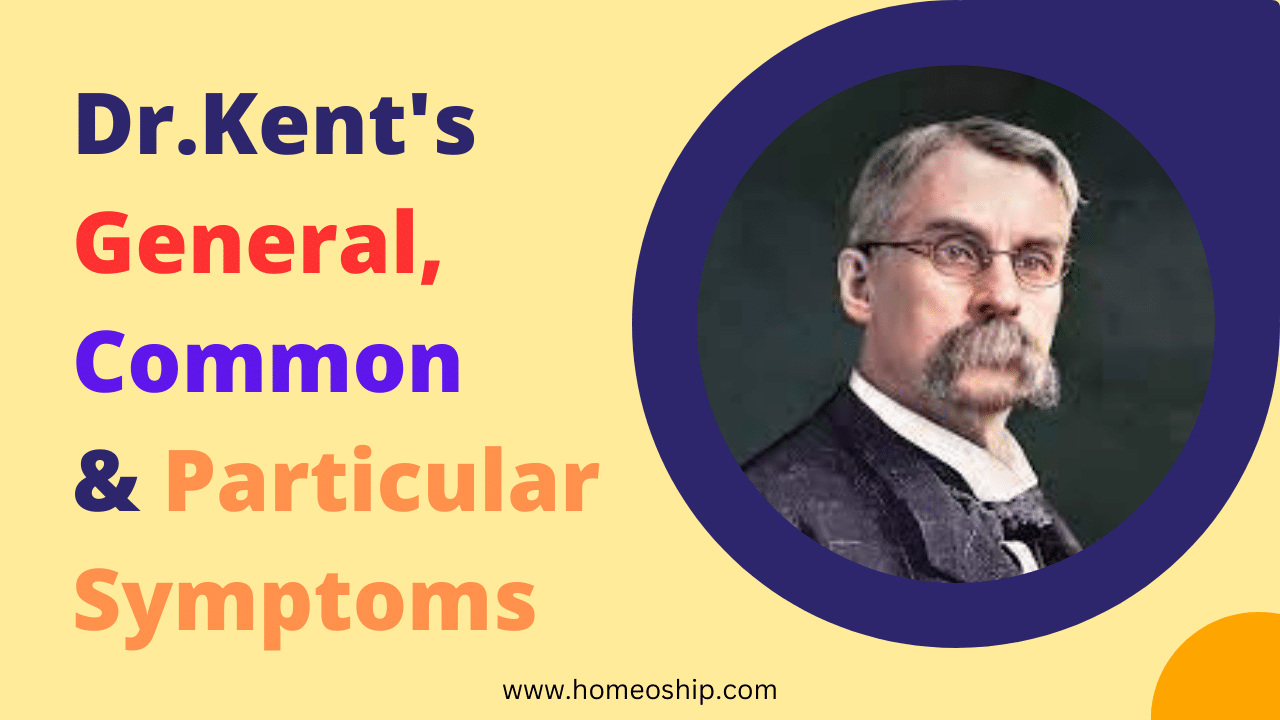Contents
Just like the 7 wonders of the world, there are 7 (seven) Cardinal Principles of homoeopathy that explains the entire homoeopathy in itself, every scientific theory in this world has its own governing laws and principles. Science attempts to understand the laws that govern nature.
The successful practice of every science depends upon how one understands those laws and how artistically one can apply these laws in routine life. Homoeopathic law also strictly follows certain laws and doctrines.
“As a scientific system, it is made up of certain facts, laws, rules and methods or processes, each of which is an integral part of the whole,” says Stuart Close.
These laws are clearly incorporated in the “Organon of Medicine”. Though 6 editions have been published so far, the basic fundamental laws remained unchanged in homoeopathy.

List of 7 Cardinal Principles
-
Law of similia
-
Law of simplex
-
Law of minimum dose
-
Doctrine of drug proving
-
Doctrine of drug dynamization
-
Doctrine of chronic diseases
-
Doctrine of vital force
Now let’s understand each and every cardinal principle in detail:
1. Law of Similia
The law of similia is the very basis of the homoeopathic system. The word Homeopathy is derived from 2 Greek words “homeos” which means “similar” and “pathos” means “suffering”. So, homoeopathy is nothing but the therapeutic application of symptom similarity.
HOMEOPATHY = HOMEOS [SIMILAR] + PATHOS [SUFFERING]
This law of similia was well known to the ancient Ayurvedic physicians, Hippocrates and Stahl, etc.
“This recognition of law underlying cure is of ancient origin; no one knows the first recognition of this law crept into use, but ancient Hindu manuscripts recorded its application. Certainly Aristotle recognized it, and Hippocrates sensed the possibilities of this law and applied it in some recorded cases” says H.A.Roberts.
Hippocrates identified this law of similia, as the only curative law in the universe. But it was the master Hahnemann, the medical genius, who made this method practically possible. He tried to bring this law to the level of universal application. The law of similia existed in the form of “nature’s law” before the time of Hahnemann. Nature’s law was stated as “similia similibus curanter”, which means “like cures likes”.
Nature’s law was not safer to apply as it is. Hence, Hahnemann modified it and made it therapeutically applicable and relatively harmless. Thus, he gave the law of similia by just modifying nature’s law. The homoeopathic law is “similia similibus curentur”, which means “let likes be cured by likes”.
We can find nature’s law in the 26th aphorism of “Organon of medicine”. “A weaker dynamic affection is permanently extinguished in the living organism by the stronger one if the latter (whilst differing in kind) is very similar to the former in its manifestations.”
2. Law of Simplex
Homeopathy strongly supports Mono-pharmacy, i.e. prescribing and administering only a single simple remedy at a time, to a patient at a given time. The reasons for prescribing mono-pharmacy are:
- The homoeopathic materia medica is constructed with the help of healthy human drug proving. In this process of drug proving, each crude drug substance is proven on humans as a single substance as it is available in nature.
- The effects produced by the drug are entered as a “drug picture” of that medicine into the materia medica. This drug picture is the effect of a single medicinal substance, capable of developing in a human being.
- The homoeopathic doctor selects the remedy for the patient by comparing the “Patient’s picture” with that of the most suitable “drug picture” in the materia medica.
- Hence, practically it is possible to select only one medicine at a time for one patient. If the physician administers two remedies, he will certainly end up in confusion, unable to decide which medicine has worked well. So follow-up of the case (remedy reaction) becomes difficult.
- If more than one remedy is prescribed, those medicines can antidote each other, or they together can create a new drug substance by making the condition miserable, because the combined effects of these medicines are not proven.
- Homeopathy believes that diseases are primarily because of the derangement of one life force called “vital force”. To set right this one force, the medicinal force required is also one.
Hahnemann was vexed with the “complex mixtures” of medicines used in his times which while on one hand could not cure the disease, on the other complicated the condition of the patient. In § 247, he writes
“it is wrong to attempt to employ complex means when simple means suffice”
So he insisted on the “law of simplex”. The crude substance, as it is available in nature, is considered a single drug substance either for drug proving or for practice.
3. Law of Minimum Dose
“The minimum dose of the medicine is the one which can bring out the curative reaction in the vital force without disturbing or damaging the body”.
In his initial stages of homoeopathic practice, Hahnemann used large quantities of homoeopathic medicines, but as years went by, his experience taught him that the smallest doses are more curative than the large doses. In homoeopathy, the minimum dose possible is recommended.
This is primarily to avoid unwanted damage (aggravation) to the patient. This seems to be based on the old pharmacological Arndt- Schultz’s Physiological Law
“weak stimuli excite physiological action of a substance, moderate one favors it and the strong stimuli retard the action or abolish altogether”
Further, in homoeopathy, it is believed that “the quantity of the drug required is in reverse ratio to the similarity”. That means, the greater the similarity between the patient’s symptoms and the drug symptoms, the minimum quantity of the medicine is required.
Administration of the minimum dose has the following advantages:
To avoid unwanted medicinal aggravation, because the aggravation might trouble the suffering patient unnecessarily or can remove the sensitivity of the vital force.
The minute quantity of the dose has the capacity to produce uncommon, peculiar, and mental symptoms as observed in the healthy human drug proving. The smaller dose prevents organic damage.
The minimum dose protects the patient from any type of drug addiction and side effects.
Chemistry teaches us that a substance in different doses acts in different ways. Ex: Glauber’s salt (Nat. Sulph-Sodium Sulphate) in a large dose causes diarrhoea in human beings. The same substance in smaller doses reduces the level of intercellular water level thus increasing urinary secretion. The same chemical has different actions in different states of dilution.
The minimum dose is also supported by many personalities.
Dr Finckle says, “the quality of the action of the homoeopathic remedy is determined by its quantity in reverse ratio”.
The French mathematician Maupertuis says in his “law of least action”,
“the quantity of action necessary to effect any change in nature is the least possible, the decisive amount is always a minimum, an infinitesimal”.
You May Like:
- What is Deflected Current in Homeopathy? – H.A. Roberts
- In which language BHMS (Homeopathy) is taught?
- Which is the best book for Organon of Medicine (Homeopathy)?
4. Doctrine of Drug Proving
Master Hahnemann in his early days of practice wrote to his friend
“I have been putting drugs of which I know little into the bodies of which I know less; so I can but renounce the practice of medicine that I may no longer incur the risk of doing injury.”
Such was the state of materia medica in the 18th century. The medicines were administered carelessly. To avoid these careless prescriptions, in homoeopathy, only well-proven medicines have to be administered to the patients. Moreover, the medicines have to be proven on both healthy males and females of different age groups and various constitutions.
Master Hahnemann was the first person to practically prove the medicines on healthy humans. Homeopathic Drug Proving can be defined as
“The process of administering the drugs to the healthy human beings of different ages, different constitutions and both the sexes with the sole purpose of observing, compiling and recording their sick-making or sick curing properties”.
The advantages of human drug proving over animal drug proving:
- Man is intellectually superior to other animals on this planet. Hence, the effect of the drug on his mind and intellect can only be studied by human drug proving.
- Animals may not explain subjective and mental symptoms accurately. Ex: fear, anxiety, desires, aversions, and sensations, etc.
- The effects of the same medicine differ from animals to humans because their anatomy is different.
- We cannot get modalities and many intellectual symptoms in animals.
- From a homoeopathic point of view, the symptoms of mind and Kent’s generals like dreams, are the most important symptoms to be ascertained. Hence, knowing the capacity of any drug to produce such symptoms is only possible by proving them to human beings.
- Qualitative study like finding out the taste and smell of a medicinal substance is only possible in human drug proving.
- The experiments of homoeopathy are made by men for men under the natural conditions which belong to the everyday life of all men. They are not necessarily conducted in elaborately equipped technical laboratories, or by using and abusing poor dumb animals whose only language is a cry” – says Stuart Close.
The drugs should not be proved on sick because:
- The curative effects of drugs can be neutralized by the symptoms of the sick person, and may not produce any effect in drug proving.
- The symptoms of the sick persons mix with the symptoms of the drugs and produce mixed symptoms.
Drug proving in homoeopathy has certain rules and regulations which have been incorporated by Hahnemann in § 105-145 of the Organon of medicine.
While proving a drug, H.A.Roberts explains the following laws of quantity and quality:
- Any drug which in its natural state, affects vital energy but little will develop a proof only in the high potency.
- Any drug which in its natural state, disturbs the vital energy to functional manifestations only, may be proven in a crude form.
- Any drug which in its natural state, disturbs the vital energy to destructive manifestations should be proven only in potentized form.
5. Doctrine of drug dynamization
This doctrine was first introduced in the 5th edition of Organon in the year 1833 along with the doctrine of vital force. The dynamization is a process by which the medicinal or curative properties of the crude substances can be brought out, which are otherwise inherent or latent. Hahnemann introduced 2 processes of potentisations:
- Trituration: A dynamization process for insoluble substances.
- Succussion: A dynamization process for the soluble substances.
The advantages of the dynamization of medicines:
- The dynamization process reduces the quantitative existence of medicine and decreases the risk of aggravation.
- Those substances which are not medicinally useful in their crude form can be aroused and their medicinal property can be brought out. Ex: The common salt (Natrium mur.), the Surukuku snake poison (Lachesis), the sand (Silicea), etc are made important remedies by the process of potentisation.
- The action of the potentized medicines is deeper, longer, and wider.
- The life force (vital force) is dynamic in nature, and the morbific force (miasm) is also dynamic hence the curative medicinal force must also be dynamic in nature.
- The dynamization process reduces the material part of the medicine to an incredible degree. Hence the “law of minimum dose” can be made practical.
6. Doctrine of Chronic Diseases
The “Theory of Chronic Diseases” was first introduced in the 4th edition of Organon in the year 1829. During his early days of homoeopathic practice, Hahnemann noticed that in spite of administering the best similimum remedy, some cases had a very bad recurrence of symptoms.
He investigated for a period of 12 years and came to the conclusion that “Miasms” is the cause of all the diseases. According to Hahnemann, miasms are the basic, fundamental, and real cause of all diseases. Miasms are dynamic disease-causing powers. He beautifully explained and projected the miasms as the cause of the disease in his revolutionary work called “The Chronic Diseases”, in the year 1828. In the later years, the concept of chronic diseases was introduced in the 4th edition of Organon.
There are 3 miasms namely Psora, Syphilis, and Sycosis. Among these three, Psora is the most fundamental, destructive, and oldest miasm. This is called the mother of all miasms. Psora is the cause for 7/8th of all the diseases; syphilis and sycosis constitute the rest. Unless these miasms are removed from the body the patient cannot be cured of his illness. Hahnemann confidently states that only dynamic homoeopathic remedies can cure these chronic diseases.
7. Doctrine of Vital Force
This doctrine was first introduced in the 5th edition of Organon in the year 1833. Homeopathy believed in the existence of an animating life force in the body which Hahnemann called the “Vital Force”. The doctrine of chronic diseases and the doctrine of vital force have given homoeopathy a place in the holistic systems of medicine.
According to this theory, the disease is because of the derangement of dynamic vital force by the dynamic disease-producing power, miasms. In the healthy condition of the man, this vital force maintains the normal functions of the body. It maintains the harmonious functioning of all the systems in the organism. In diseases, this vital force is the first one to be deranged by the miasms.
The symptoms which we notice in diseases are produced by this vital force. With the assistance of dynamic homoeopathic medicines, this deranged vital force can release itself from the morbid forces called miasms. Hahnemann explains the vital force in the 9th aphorism of the 6th edition. The term “vital force” has been replaced by the term “vital principle” in certain areas of the 6th edition.
Hahnemann was neither a pure vitalist nor a pure materialist, but he was an integralist, who gave importance to both the life force and the physical body. Homeopathy believes that health and disease are the results of the changing states of equilibrium between the body and the vital force.
Hope you understand the Cardinal Principles of Homeopathy! if you have any doubts you can always ask us in the comment below. Follow us on Instagram for more updates.



